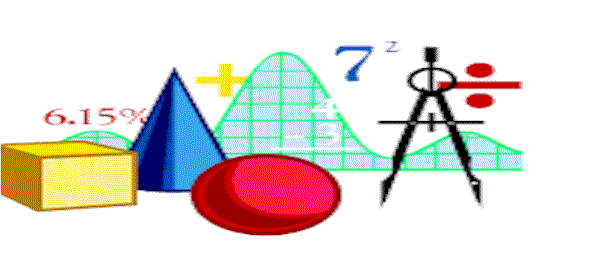
binaryInsert

|
binaryInsert
|
The binaryInsert Function destructively inserts the specified new value
into the Vector at the proper location to preserve ascending sort order.
The Vector is increased in size to accommodate the new value.
If a matching value is already in the Vector, no insertion is made. Since there is always a matching object, either before or after insertion,
the binaryInsert function always returns the index of the newly inserted
value or the location of the matched object. The binaryInsert Function destructively inserts the specified new value
into the Structure at the proper location to preserve ascending sort order.
The Structure is increased in size to accommodate the new value.
If a matching value is already in the Structure, no insertion is made. Since there is always a matching object, either before or after insertion,
the binaryInsert function always returns the index of the newly inserted
value or the location of the matched object. The binaryInsert Function destructively inserts the specified new value
into the Matrix at the proper location to preserve ascending sort order.
The Matrix is increased in size to accommodate the new value.
If a matching value is already in the Matrix , no insertion is made. Since there is always a matching object, either before or after insertion,
the binaryInsert function always returns the index of the newly inserted
value or the location of the matched object. The binaryInsert Function destructively inserts the specified new value
into the NumMatrix at the proper location to preserve ascending sort order.
The NumMatrix is increased in size to accommodate the new value.
If a matching value is already in the NumMatrix , no insertion is made. Since there is always a matching object, either before or after insertion,
the binaryInsert function always returns the index of the newly inserted
value or the location of the matched object. Usage Normally a vector is not maintained in sort order, but can be sorted by
invoking the sort function. If a vector has been sorted,
the binaryInsert function should be used to add new values to the vector
and preserve the sort order. The binaryInsert function assumes sorted
ascending order only.
Normally a structure is not maintained in sort order, but can be sorted by
invoking the sort function. If a structure has been sorted,
the binaryInsert function should be used to add new keys to the structure
and preserve the sort order.
Note: Returns an error message if the Matrix is not of rank one. Normally a Matrix is not maintained in sort order, but can be sorted by
invoking the sort function. If a Matrix has been sorted in ascending order,
the binaryInsert function should be used to add new values to the Matrix
and preserve the sort order. The binaryInsert function assumes sorted
ascending order only.
Note: Returns an error message if the NumMatrix is not of rank one. Normally a NumMatrix is not maintained in sort order, but can be sorted by
invoking the sort function. If a NumMatrix has been sorted in ascending order,
the binaryInsert function should be used to add new values to the Matrix
and preserve the sort order. The binaryInsert function assumes sorted
ascending order only.
Structure
Matrix
NumMatrix
Structure
Matrix
NumMatrix
(binaryInsert vector newValue) The index where the new key was installed.
(binaryInsert struct newkey) The index where the new key was installed.
(binaryInsert matrix newValue) The index where the new key was installed.
(binaryInsert nummatrix newValue) The index where the new key was installed.
Expression:
Arguments
Name
Type
Description Argument: vector Vector FltVector IntVector NumVector BitVector ShortVector
A predefined vector variable or constant. Argument: newValue Character String Symbol Vector BitVector Brick ByteVector IntVector
FltVector ObjVector Structure Dictionary Directory
Matrix NumMatrix Integer Float Number Complex Boolean
The new value to be installed in the Vector.
Returns:
Expression:
Arguments
Name
Type
Description Argument: struct Structure
A predefined Structure variable or constant. Argument: newkey Symbol
The new key to be installed in the Structure.
Returns:
Expression:
Arguments
Name
Type
Description Argument: matrix Matrix
a previously sorted Matrix Argument: newValue Character String Symbol Vector BitVector Brick ByteVector IntVector
FltVector ObjVector Structure Dictionary Directory
Matrix NumMatrix Integer Float Number Complex Boolean
The new value to be installed in the Matrix.
Returns:
Expression:
Arguments
Name
Type
Description Argument: nummatrix NumMatrix
a previously sorted Matrix Argument: newValue Character String Symbol Vector BitVector Brick ByteVector IntVector
FltVector ObjVector Structure Dictionary Directory
Matrix NumMatrix Integer Float Number Complex Boolean
The new value to be installed in the NumMatrix.
Returns:
Here are a number of links to Lambda coding examples which contain this instruction in various use cases.
Here are the links to the data types of the function arguments.
| Character | String | Symbol | Vector |
| BitVector | Brick | ByteVector | IntVector |
| ShortVector | FltVector | ObjVector | Structure |
| Dictionary | Directory | CpxVector | Matrix |
| NumMatrix | Integer | Float | Number |
| Complex | Boolean |
Here are also a number of links to functions having arguments with any of these data types.

|
Analytic Information Server (AIS)AIS Component Systems
|